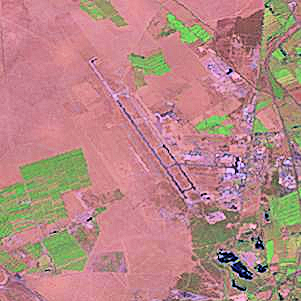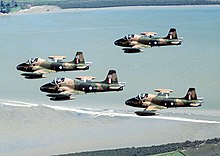
A flight surgeon is a military medical officer practicing in the clinical field of aviation medicine, which is also occasionally known as flight surgery.

The French Air and Space Force is the air and space force of the French Armed Forces. Formed in 1909 as the Service Aéronautique, a service arm of the French Army, it became an independent military branch in 1934 as the French Air Force. On 10 September 2020, it assumed its current name, the French Air and Space Force, to reflect an "evolution of its mission" into the area of outer space.
Squadron leader is a senior officer rank used by some air forces, with origins from the Royal Air Force. The rank is used by air forces of many countries that have historical British influence.
Wing commander is a senior officer rank used by some air forces, with origins from the Royal Air Force. The rank is used by air forces of many countries that have historical British influence.
In military aviation, a wing is a unit of command. In most military aviation services, a wing is a relatively large formation of planes. In Commonwealth countries a wing usually comprises three squadrons, with several wings forming a group. Each squadron will contain around 20 planes.

Istres-Le Tubé Air Base is a large multi-role tasked French Air and Space Force base located near Istres, northwest of Marseille, France. The airport facilities are also known as Istres - Le Tubé.
A group is a military unit or a military formation that is most often associated with military aviation.

The Air Education and Training Command (AETC) is one of the nine Major Commands (MAJCOM) of the United States Air Force (USAF), reporting to Headquarters, United States Air Force. It was established 1 July 1993, with the realignment of Air Training Command and Air University.

Kindley Air Force Base was a United States Air Force base in Bermuda from 1948–1970, having been operated from 1943 to 1948 by the United States Army Air Forces as Kindley Field.

Between 1933 and 1945, the organization of the Luftwaffe underwent several changes. Originally, the German military high command, for their air warfare forces, decided to use an organizational structure similar to the army and navy, treating the aviation branch as a strategic weapon of war. Later on, during the period of rapid rearmament, the Luftwaffe was organized more in a geographical fashion.

The Serbian Air Force and Air Defence, is the air force of Serbia and service branch of the Serbian Armed Forces. Its mission is to guard and protect the sovereignty of Serbian airspace, and jointly with the Serbian Army, to protect territorial integrity of the country.

The Portuguese Air Force is the aerial warfare force of Portugal. Locally it is referred to by the acronym FAP but internationally is often referred to by the acronym PRTAF. It is the youngest of the three branches of the Portuguese Armed Forces.

Luxeuil - Saint-Sauveur is a medium size French Air and Space Force base located near Luxeuil-les-Bains in the Franche-Comté region of France. It has two runways: 113/293 with a length of 2433m, and 038/218 with a length of 2315m.

Naval Air Station Key West, is a naval air station and military airport located on Boca Chica Key, four miles (6 km) east of the central business district of Key West, Florida, United States.

The Bulgarian Air Force is one of the three branches of the Military of Bulgaria, the other two being the Bulgarian Navy and Bulgarian land forces. Its mission is to guard and protect the sovereignty of Bulgarian airspace, and jointly with the other branches, to protect territorial integrity. The Bulgarian Air Force is one of the oldest air forces in Europe and the world. In recent times it has been actively taking part in numerous NATO missions and exercises in Europe.

Escadron de Chasse 1/2 Cigognes is a French Air and Space Force fighter squadron currently stationed at BA 116 Luxeuil - Saint-Sauveur Air Base, Haute-Saône, France.

Vélizy-Villacoublay Air Base is a French Air and Space Force (ALAE) base. The base is located approximately 2 miles (3.2 km) southeast of Vélizy-Villacoublay; about 8 miles (13 km) southwest of Paris.

A squadron in an air force, or naval or army aviation service, is a unit comprising a number of military aircraft and their aircrews, usually of the same type, typically with 12 to 24 aircraft, sometimes divided into three or four flights, depending on aircraft type and air force.
The Strategic Air Forces (FAS) is a command of the French Air and Space Force. It was created on January 14, 1964, and directs France's nuclear bombardment force.
The history of the Serbian Air Force begins in 1912, when the air force was created and first aircraft were purchased. This made Serbia one of the first 15 states in the world to have an air force. Since that time, Serbian Air Force has numbered thousands of pilots, more than five thousand aircraft, four types of missile mid-range systems, a number of small-range missile systems and some 15 radar types.














